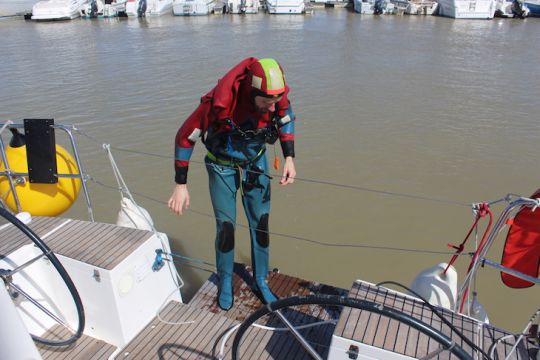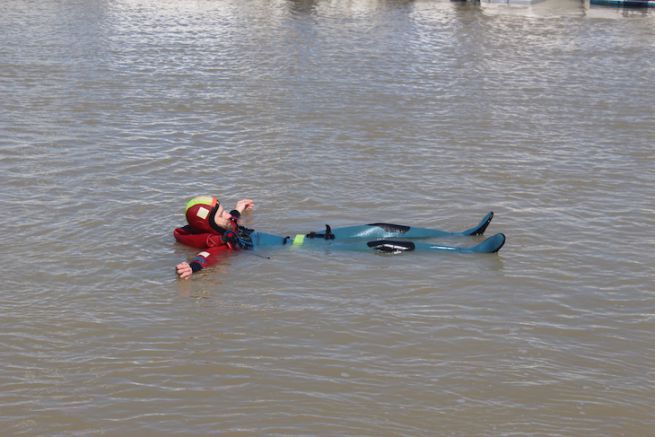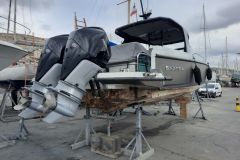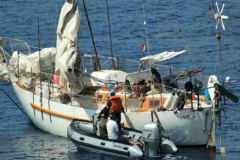What's that?
The TPS suit is a personal safety equipment that protects against hypothermia when immersed in cold water. After a 6-hour immersion in water at 0°, the body should have lost only 2°. It also replaces the lifejacket, as it provides flotation and rollover on the back of the shipwrecked person, all on average in less than 5 seconds. It consists of integrated slippers with soles, a hood, and removable or non-removable gloves. Safety equipment is often attached to the suit:
- Reflective strips
- Signal lamp
- Whistle
- Fluorescent liquid pouch
- Harness with subcutaneous strap and lifting handle
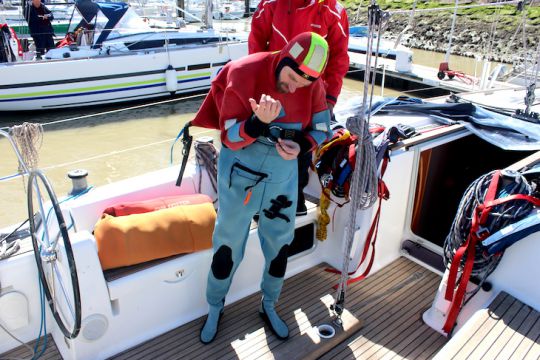
For whom?
The GST is a "combination of manoeuvres" rather than "survival", so that safety would be permanent as soon as conditions could become severe. Moreover, the "S" in T.P.S. does not mean "Survival" but "Suit"; TPS being in fact the initials of "Thermal Protective Suit". The TPS survival suit is not mandatory on board for boaters, but strongly recommended for long distance cruising. It should be checked approximately every 3 years for wear and tightness.

Why?
In case of a hard blow, it is strongly advised to put on your suit (which must be put on in maximum 2 minutes) before climbing into your life raft. If you don't have time to get to safety first, it will protect you from the cold if you are immersed. All you have to do is join your life raft or wait for help by floating on your back.
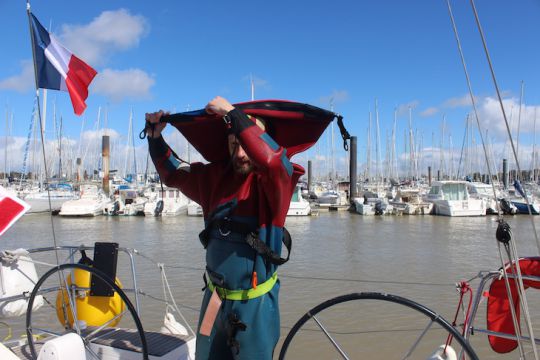
In heavy weather, you can also wear the TPS suit, which will protect you from the cold and rain. In the event of a fall into the sea, it will also act as protection against the cold and as a buoyancy system.
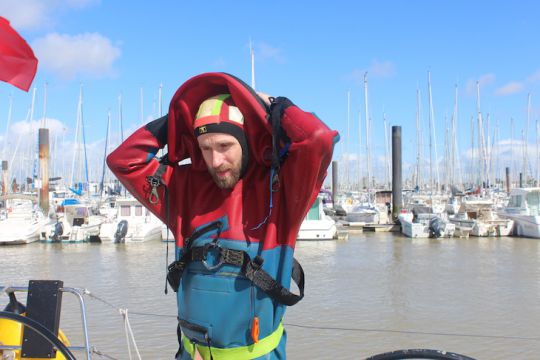
How to use it?
The GST suit - made of neoprene - can be put on in less than two minutes. Keep warm clothes underneath and take off your shoes. The slippers are already equipped with reinforced soles. Unfold the suit, keeping the hood and belly ring on the outside. To put it on, sit down and pass your legs first. Then lift your body up before putting both arms into the sleeves. Pull the hood over your head in front of it. Then grab the end of the suit and fold it over to the front to close the zipper. Then roll up several ropes with this end and hook the carabiners onto the belly hoist ring. It's this sausage that will keep your head above water.
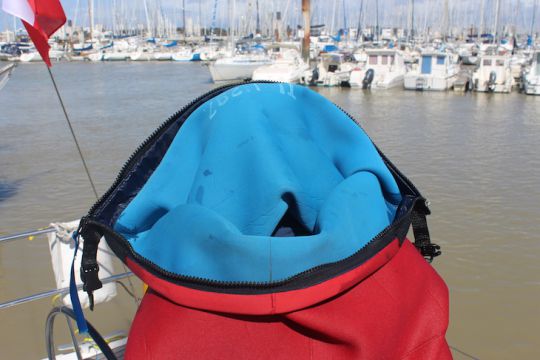

Where to buy it?
Only Guy Cotten's TPS suit is designed for sailing in heavy weather. In fact, it is the one that equips ocean racers. Unfortunately, for certification reasons, it has not been marketed since 2019. So you have to look for it on the second-hand market. Other combinations are sold on the Internet, especially from abroad, at more attractive prices (about 400 euros).
You can also find second-hand models on sites such as the Bon Coin or from offshore racers (such as the Classe Mini for example). Once again, check the condition of the suit by trying it on, there's nothing better!
